This is another post in my series on my adventures in painting miniature figures. You can see the entire series by clicking on the CRAFTS link in the tag cloud to the right (if you’re reading this on a desktop) or below (if you’re reading this on a phone).
Once again, I offer you lots of pictures which might help you in your own painting. Again, you’ll have to get through a few paragraphs on circumstance and technique before the pretty photos. And again, the links to Amazon are affiliate links that might profit me slightly.
With all those warnings:
Etherfields wave 2
I finally received the second set of packages for the game Etherfields; I’ve written before about painting the figures in the first “wave” of shipping. The second wave included expansions for the main game, each of which contained one or two large miniatures meant exclusively for those expansions.
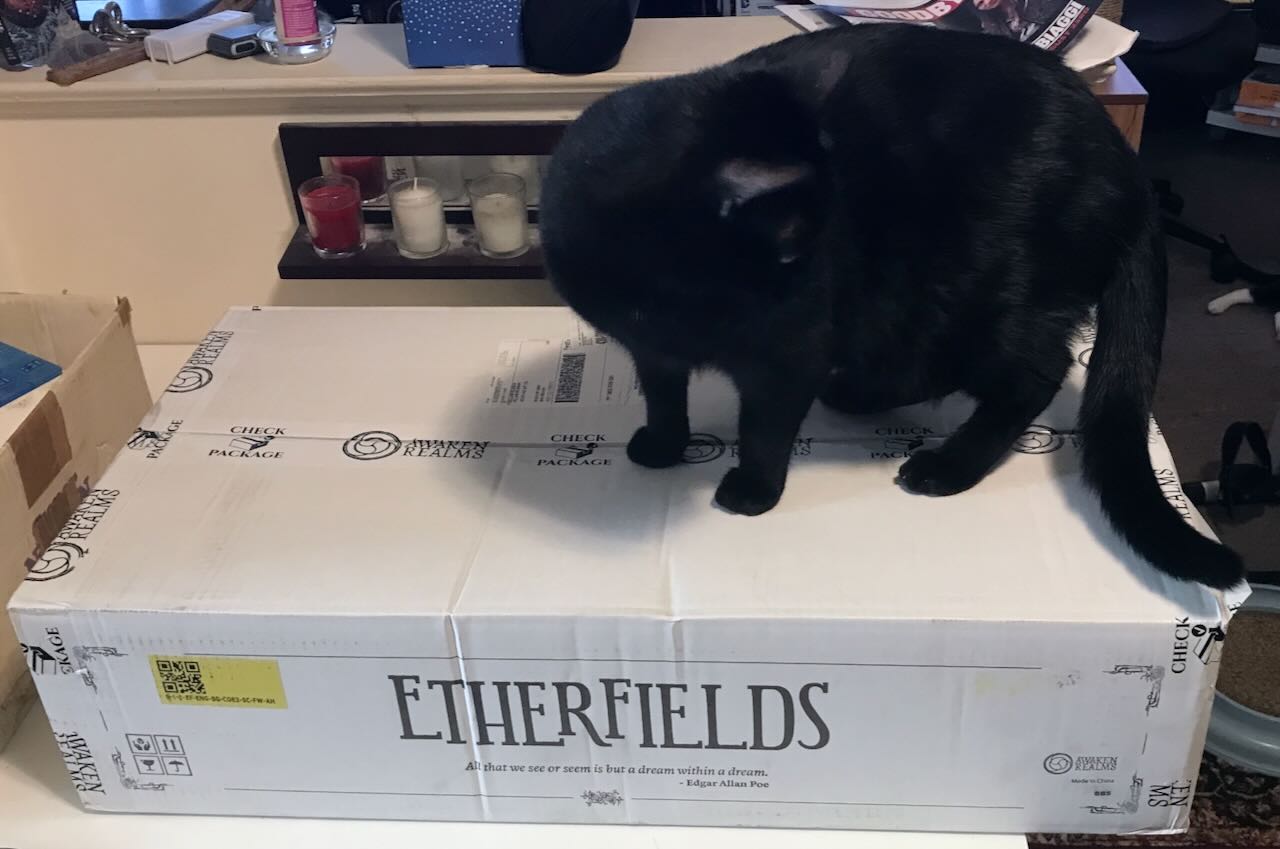
I also ordered optional alternative figures. The first wave included miniatures for the players (when they achieve a “Lucid” state) and for the creatures you might encounter in the game’s Dreams. These alternatives represented the same thing, but with different artwork. You had a choice for which mini to use to represent, let’s say, the Tormentor when you met it in the game.
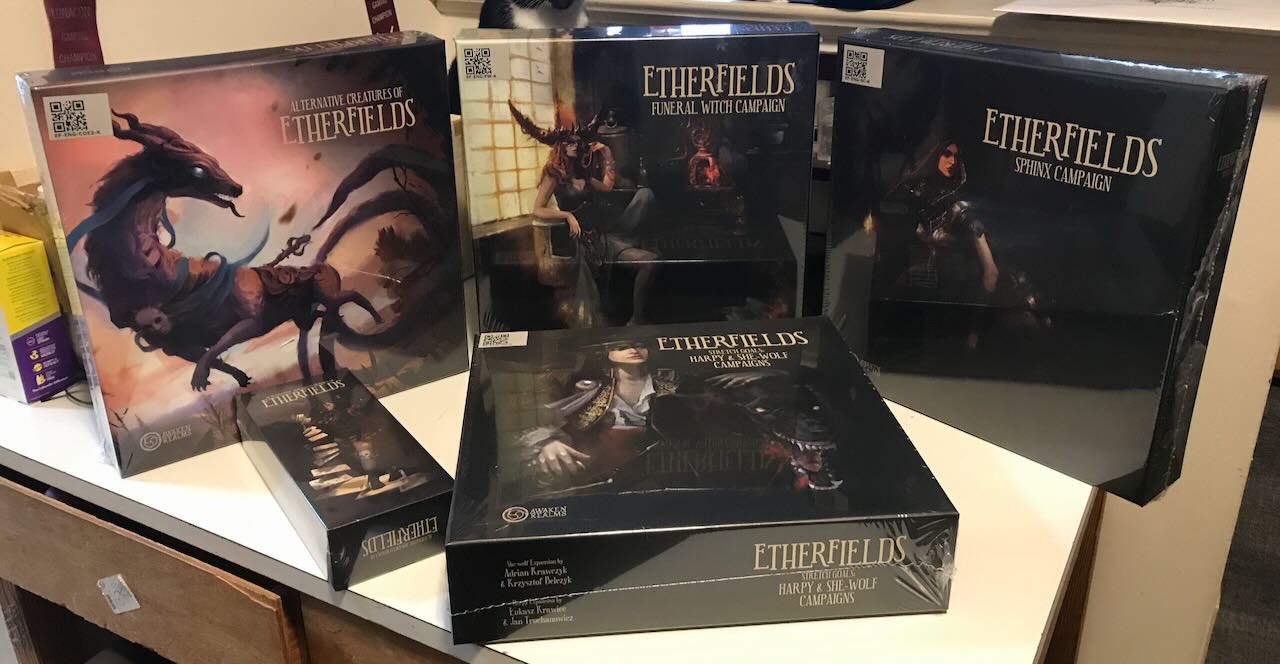
All of this is optional. You don’t need extra or alternative miniatures to play the game. But the miniature designs are beautiful, and I wanted to paint them.
Technique
Well, maybe “paint” is too strong a word. I haven’t truly painted miniature sculpture since Mysthea. What I do is called “sketch shading” by Aella13, “pre-shading” by Vince Venturella, and “sundrop” by Awaken Realms. It’s a way to make the figures more colorful and bring out their details, without getting into detailed application of paint that’s beyond my skill.
Start with the unpainted minis:

For the most part, everything I do uses an inexpensive airbrush to apply the paint. I start with zenithal prime, with my choice of priming colors determined by the final overall color I’ll apply to the mini:
Gray Zenithal

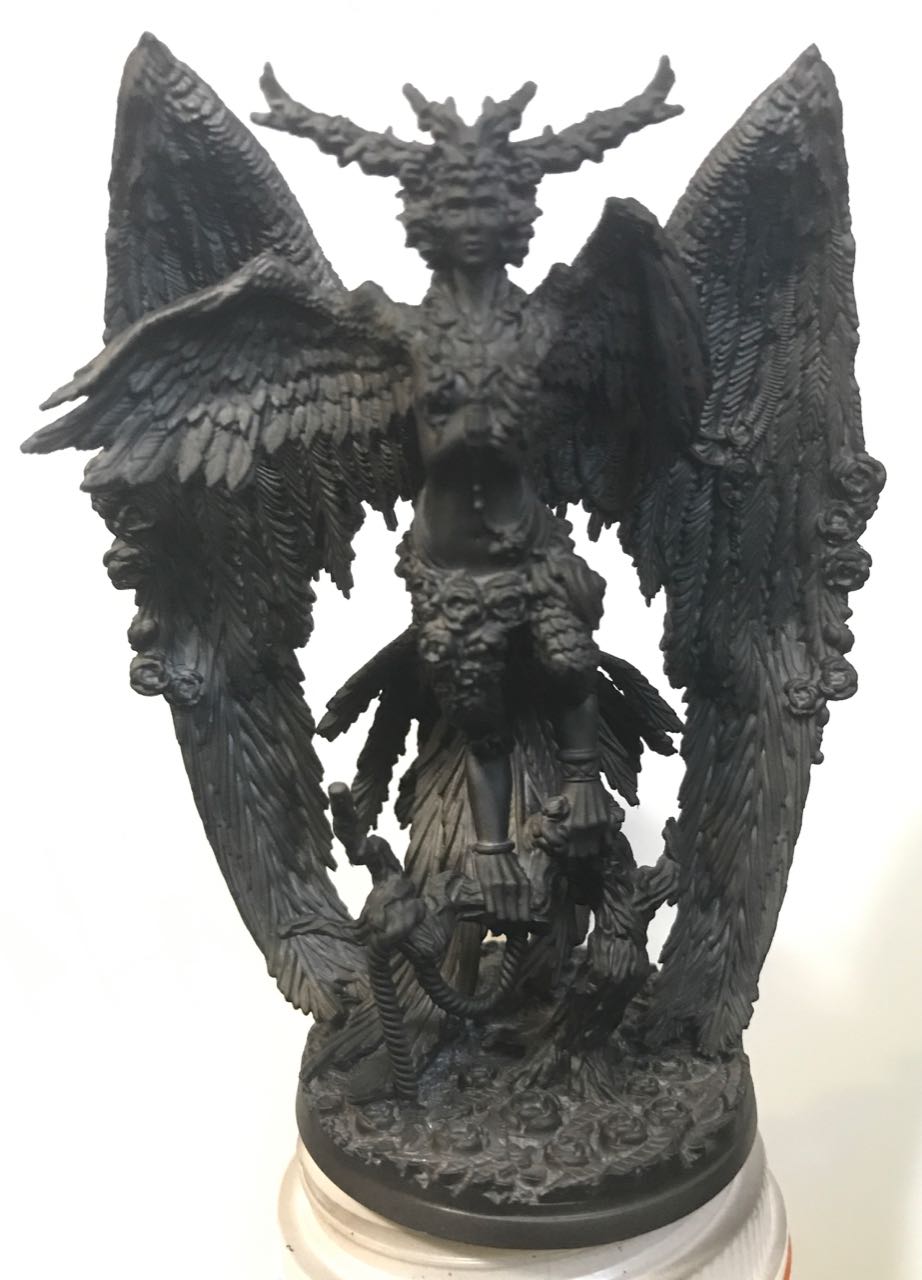
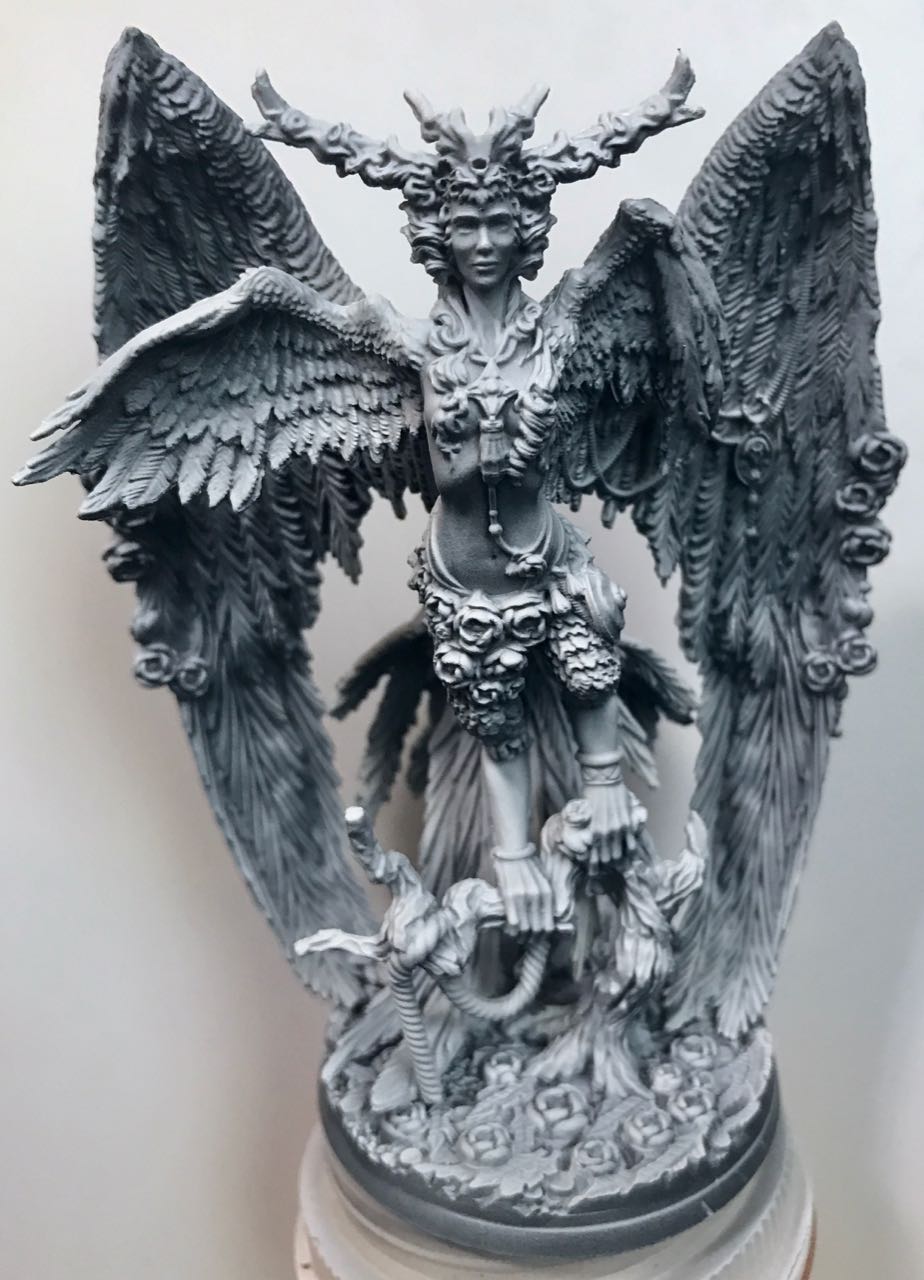
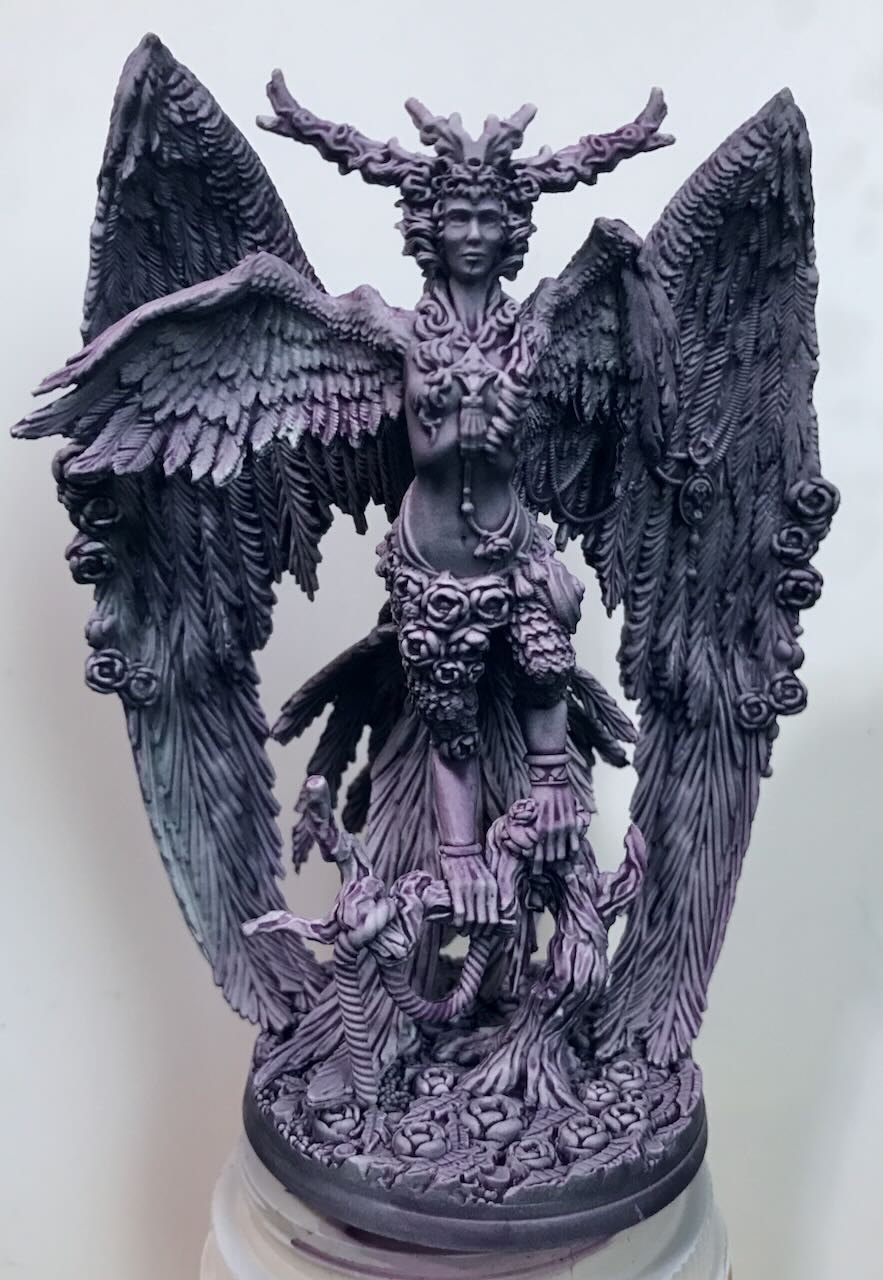
Tan Zenithal
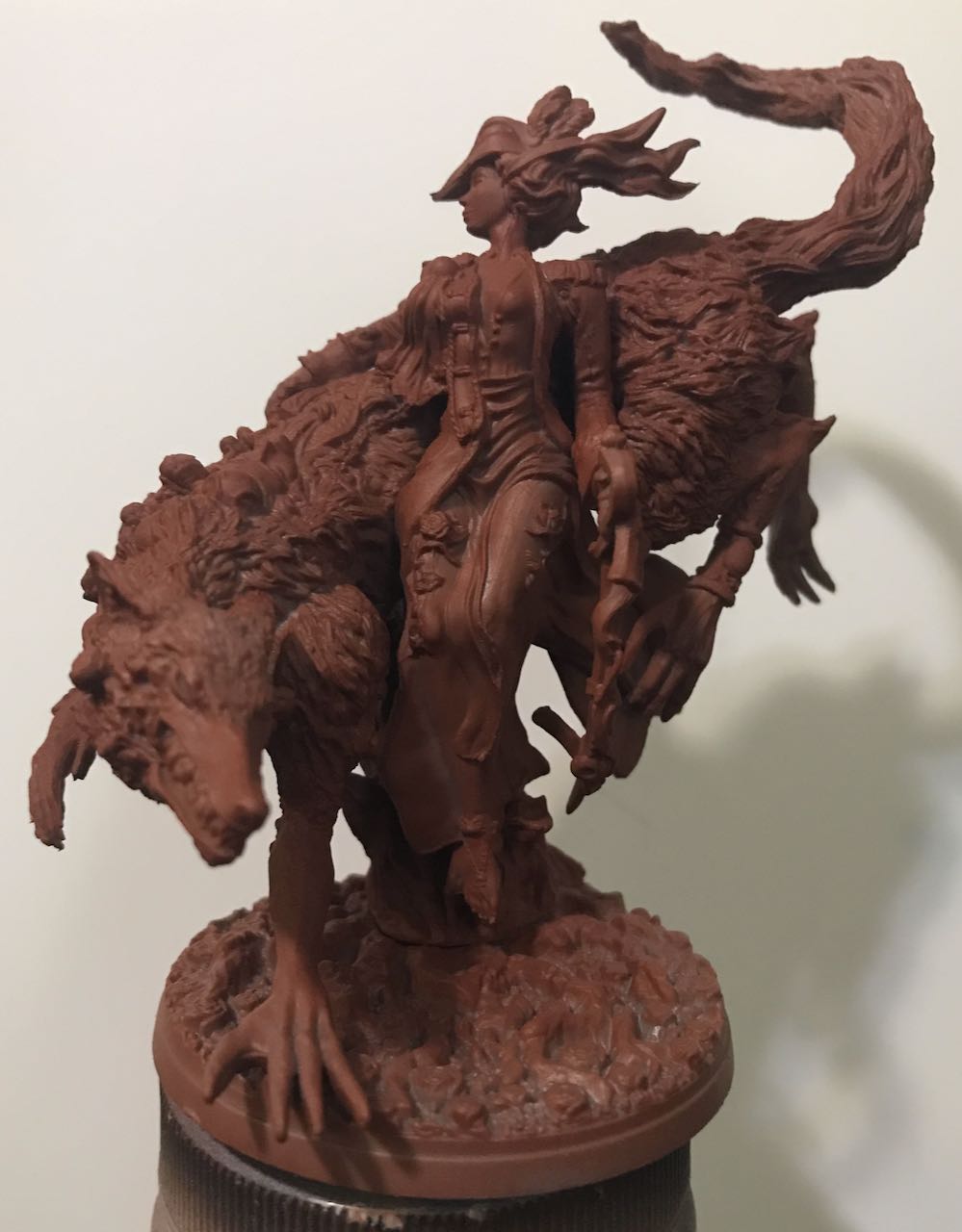
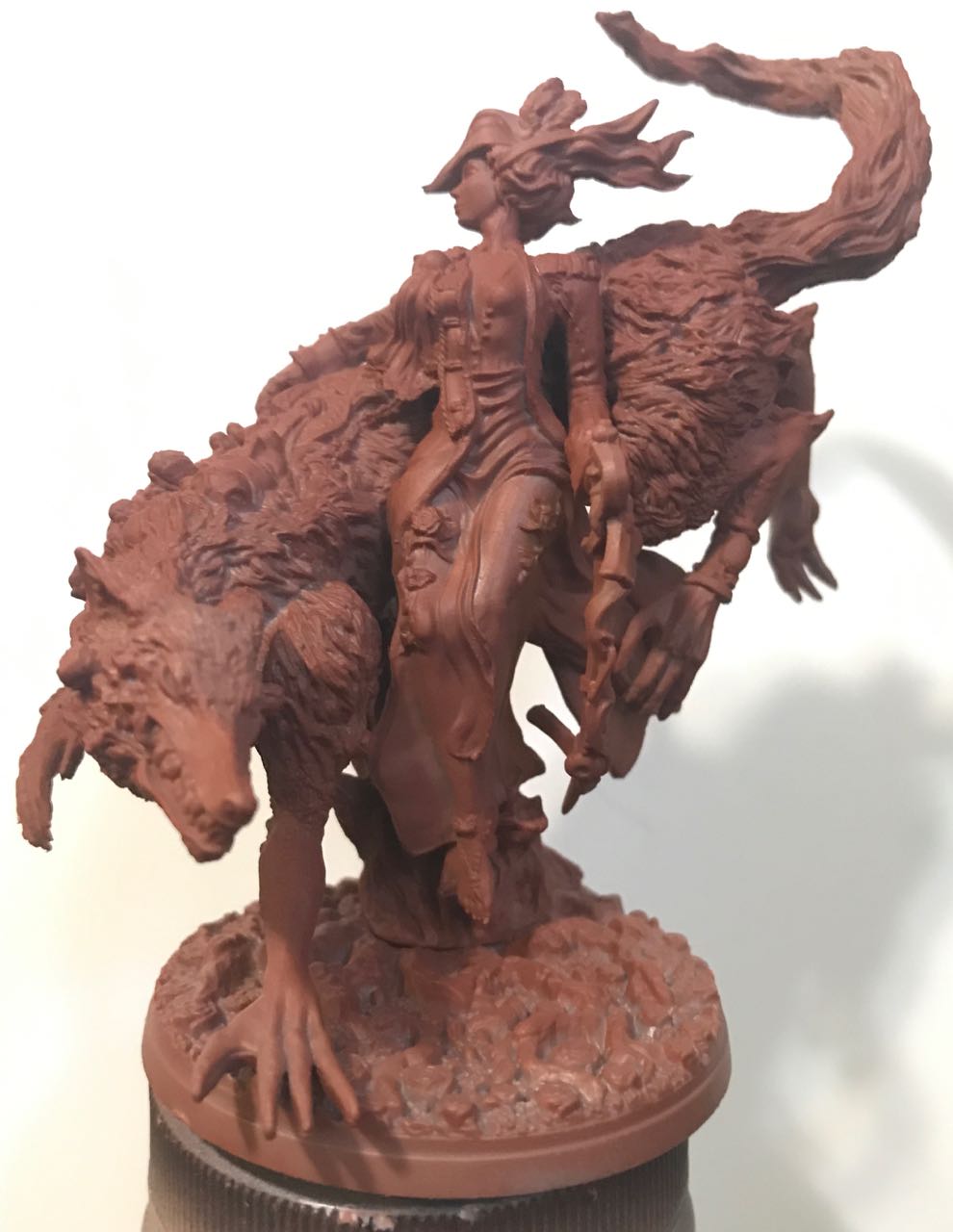


Zenithal batches
I didn’t apply the zenithal primes to the minis individually. I set up separate batches for gray and tan zenithal:
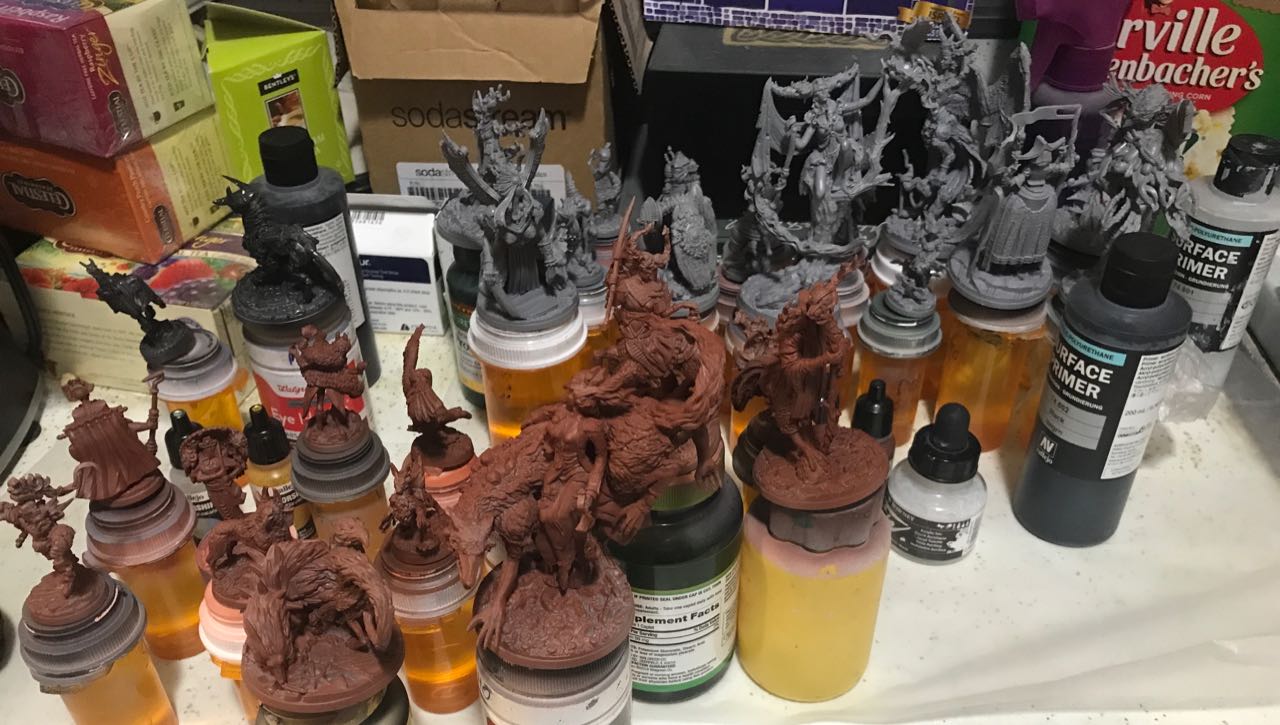

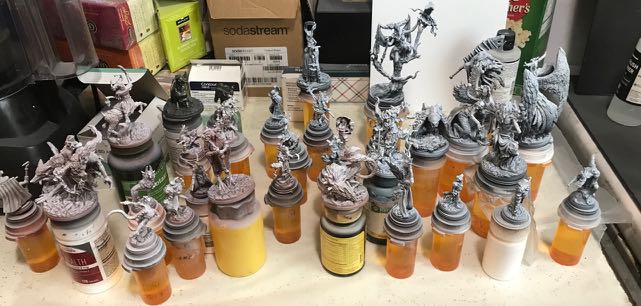
The pictures
For this blog post, the pictures are sized to fit the screen, so it may be hard to tell their relative scale. For a visual clue, note that I used the same pill container as a pedestal in the pictures.
You may want to compare these alternative sculptures with the figures in the photos I put in my earlier post on painting the minis from the first wave of Etherfields. They are all quite different from the art that shipped with Wave 1.
If you’re wondering how I chose the colors and whether to dilute them with mediums, I used all those reference dwarves I described in my earlier miniature-painting blog posts.


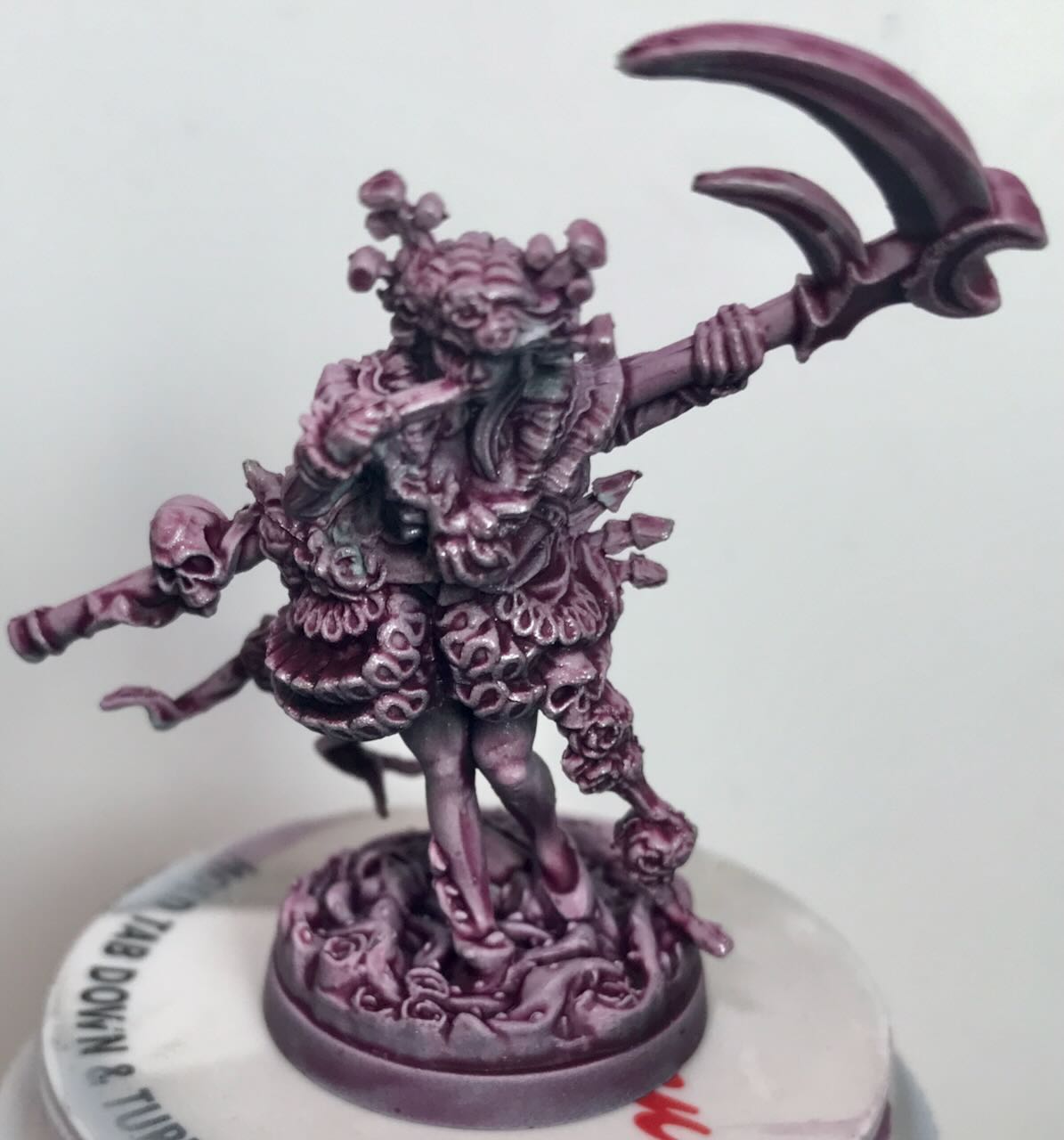

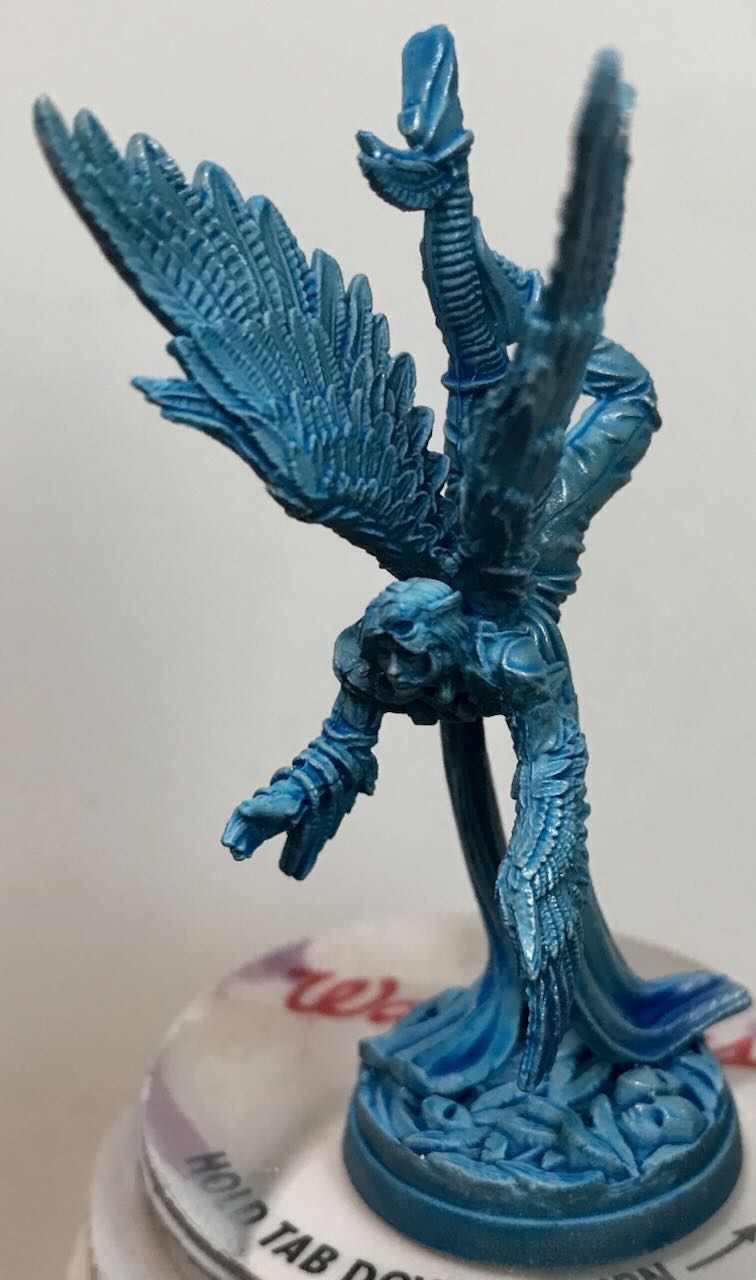
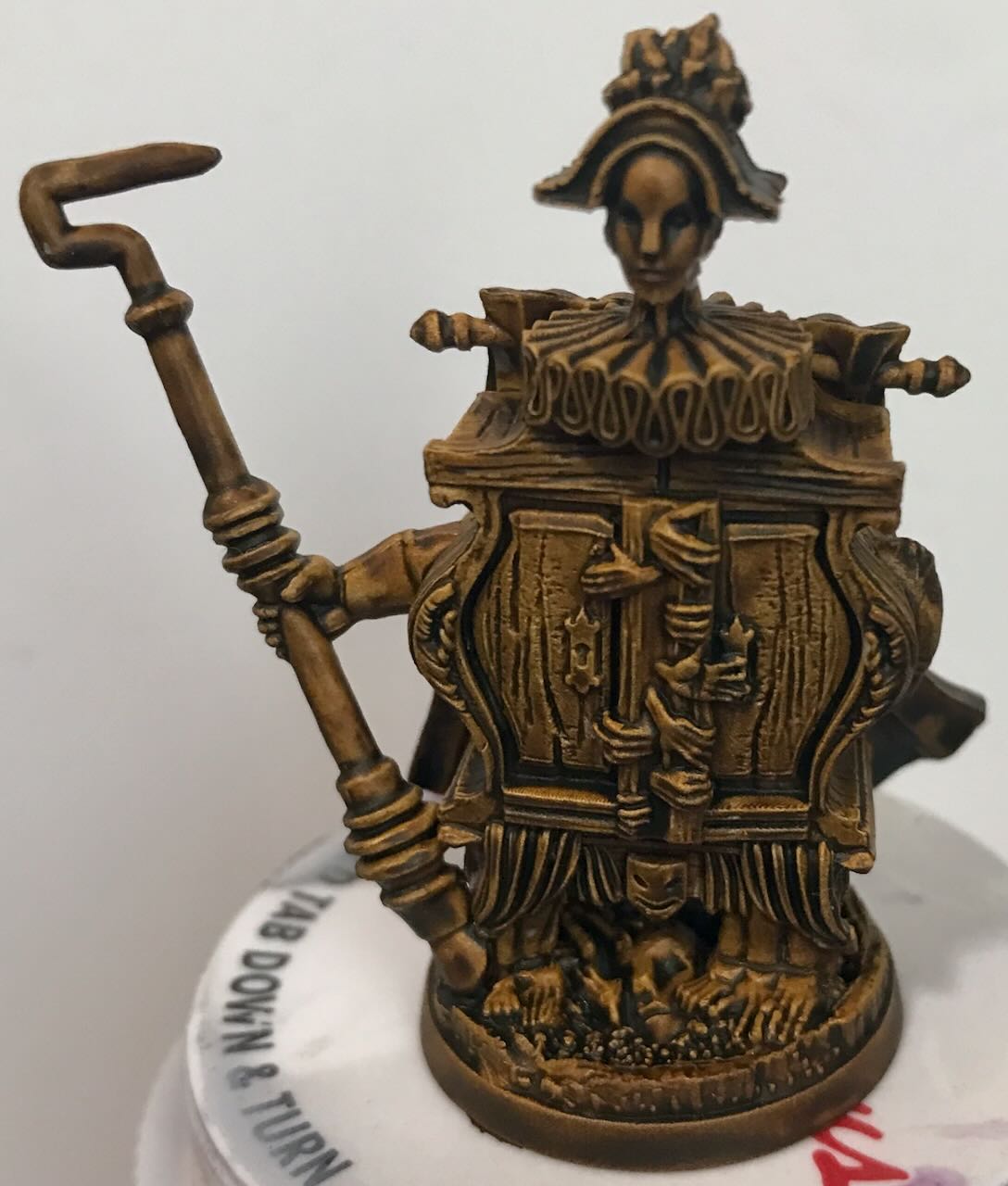

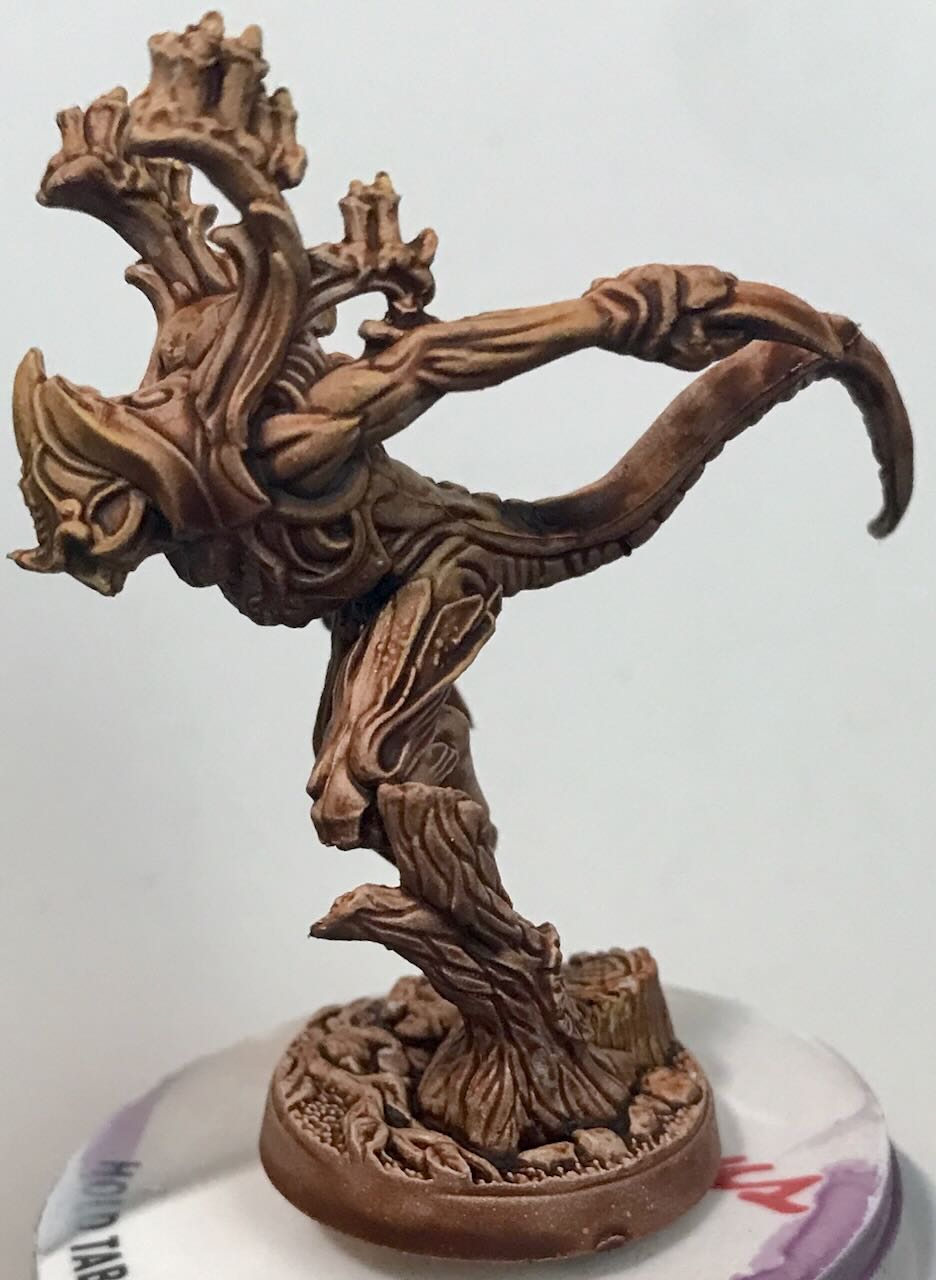
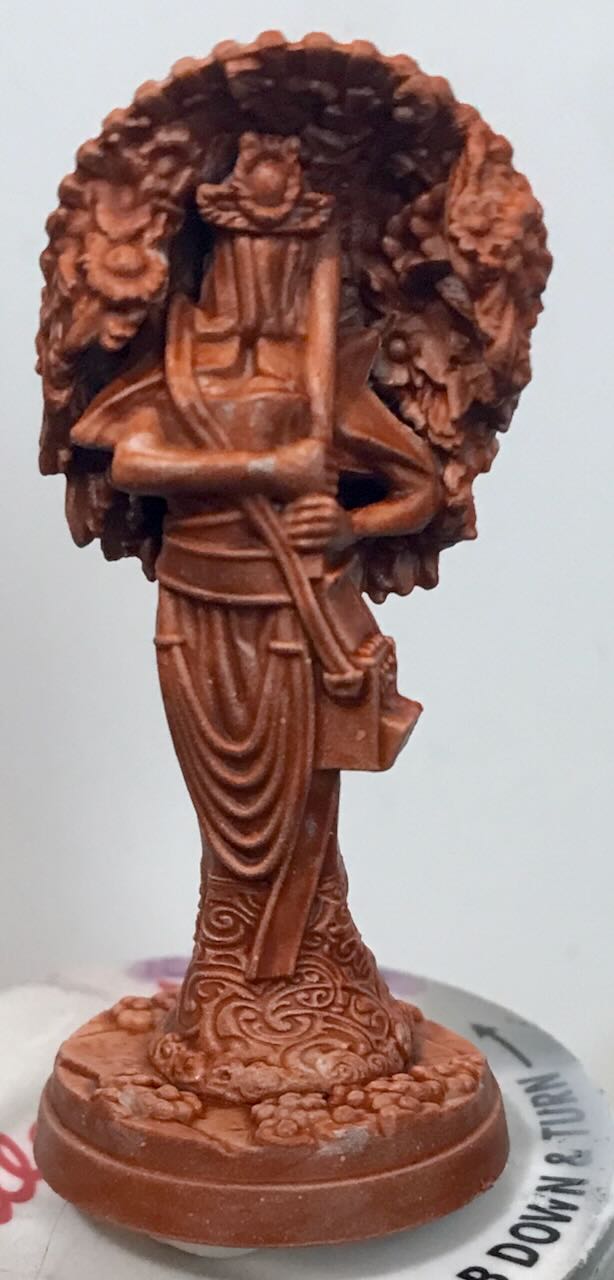
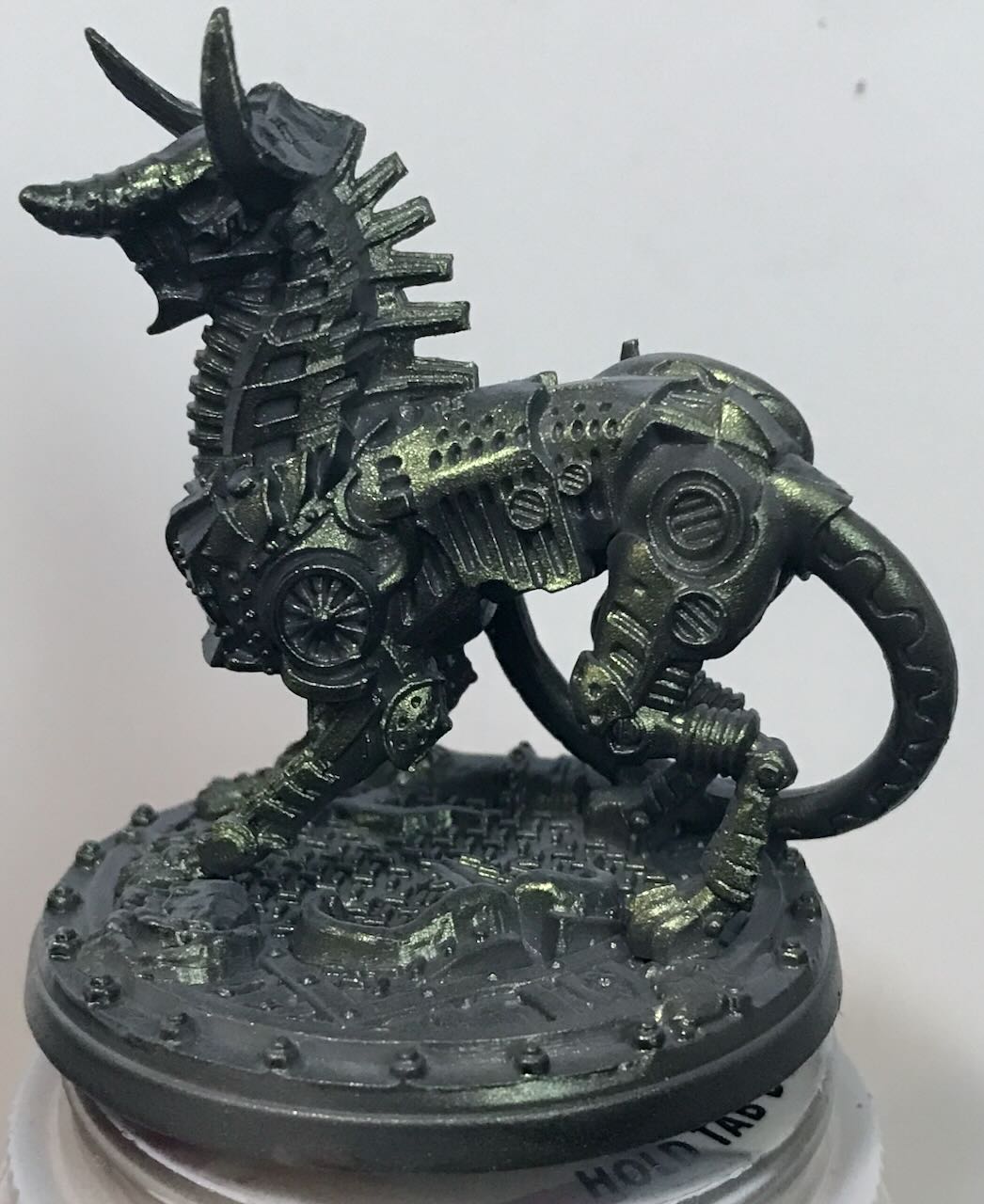
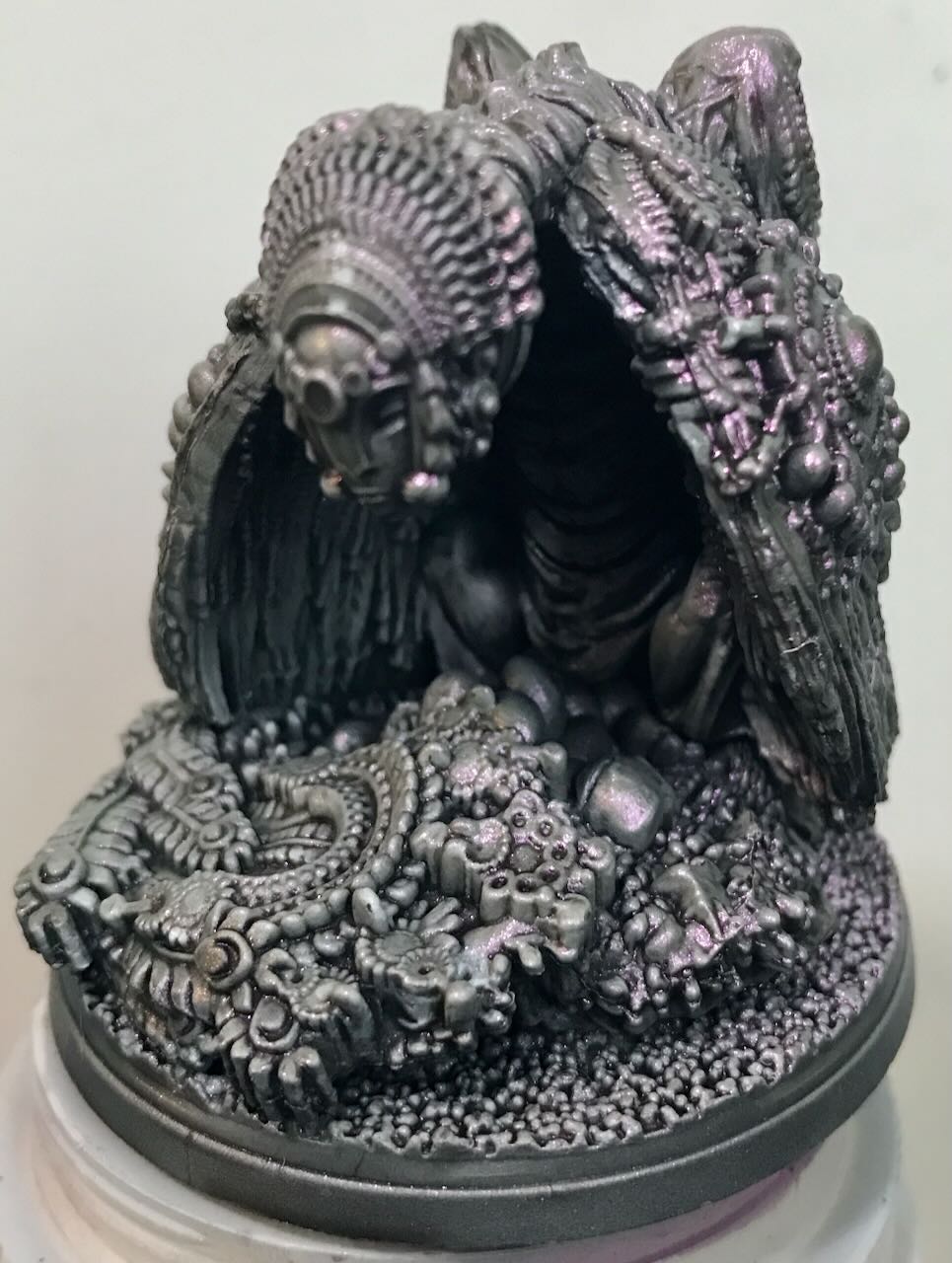

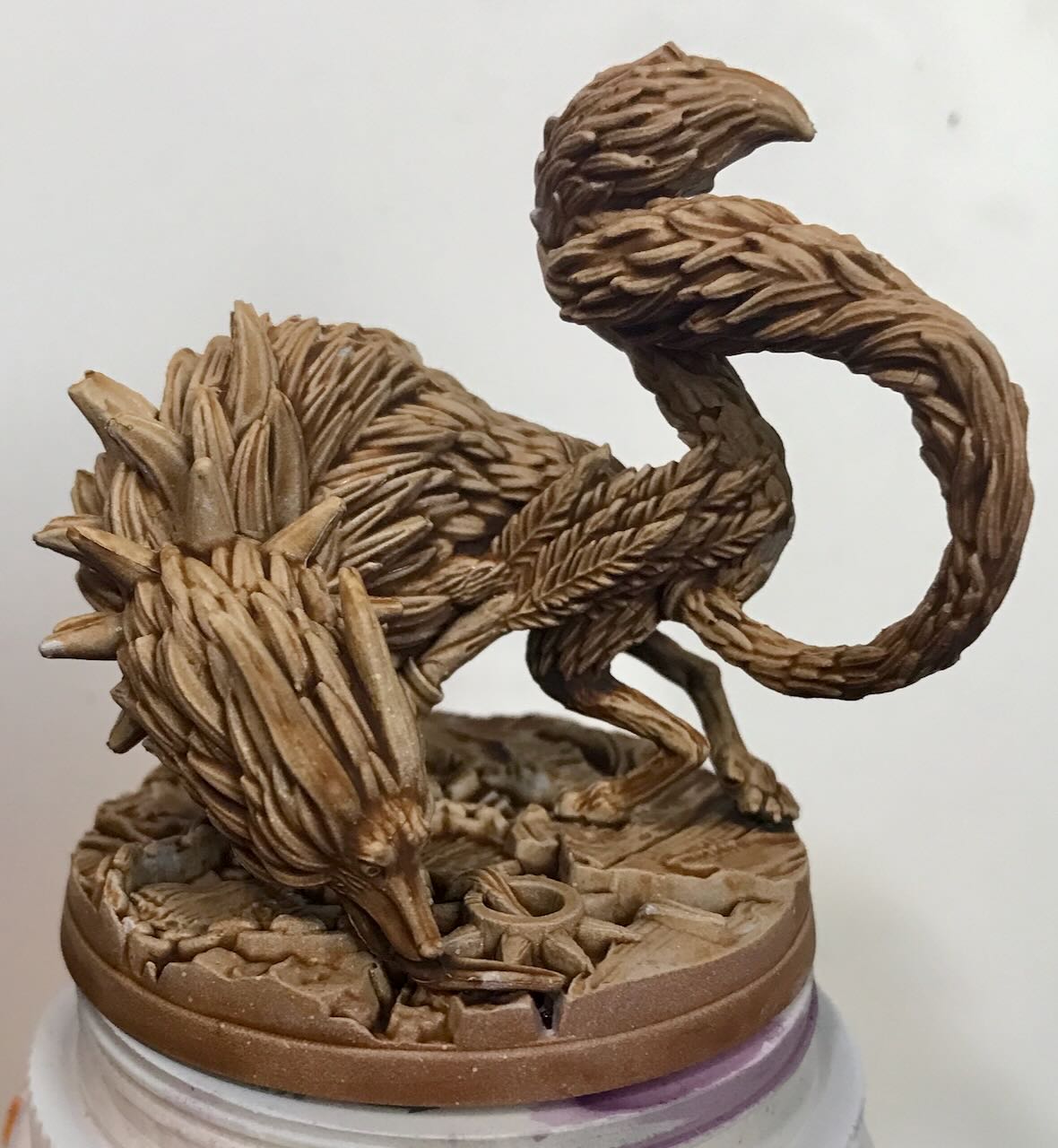
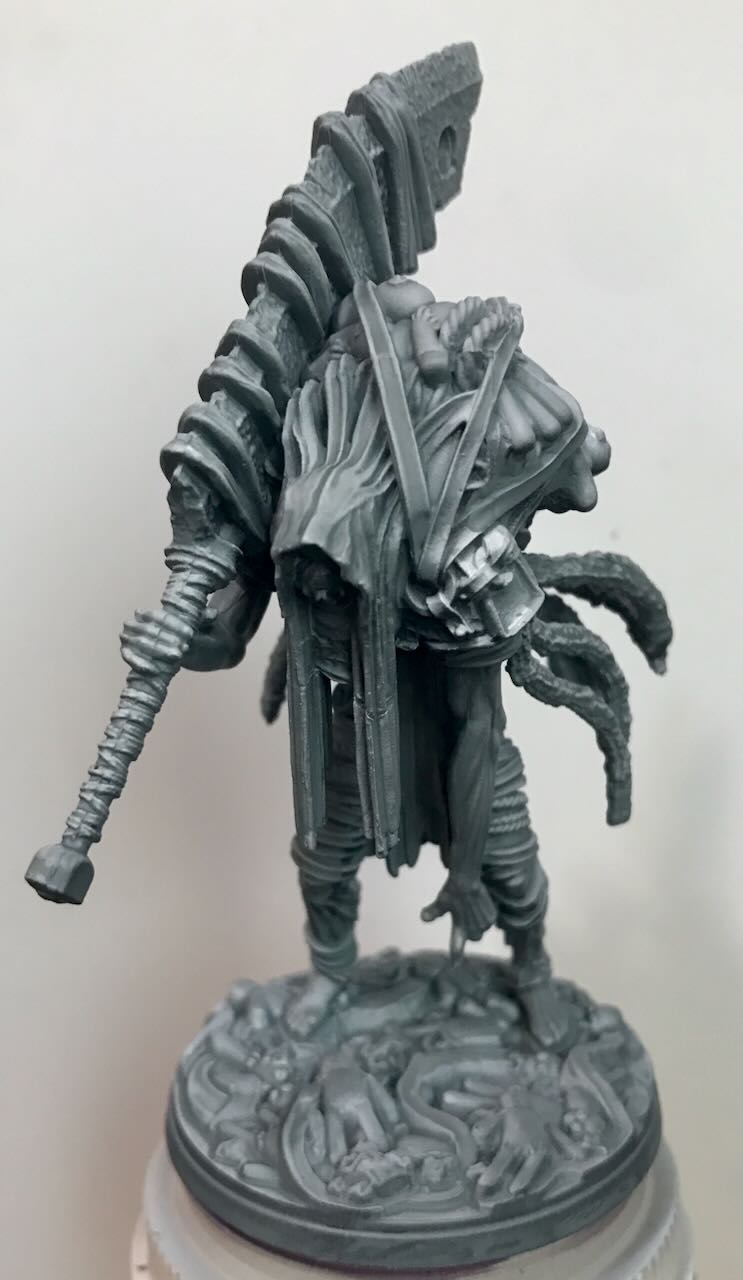
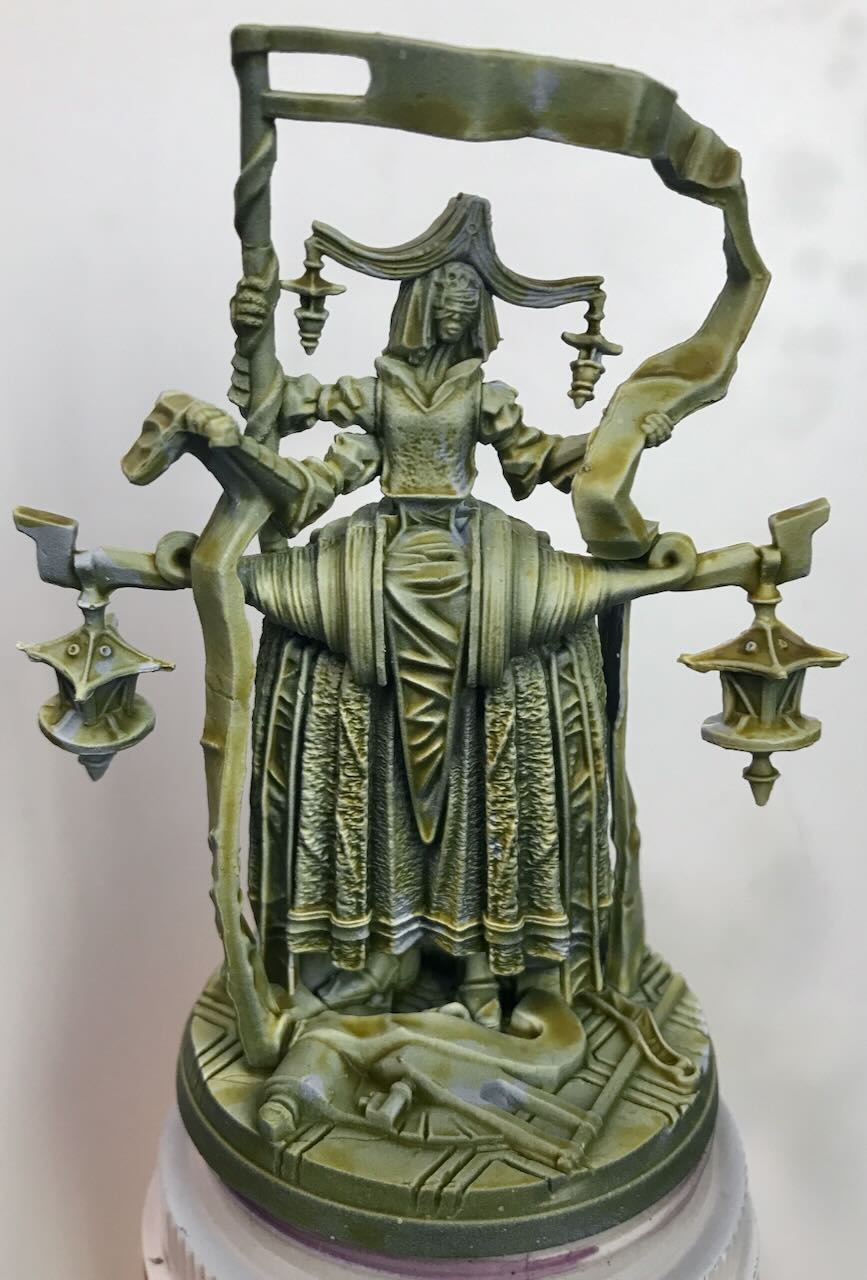
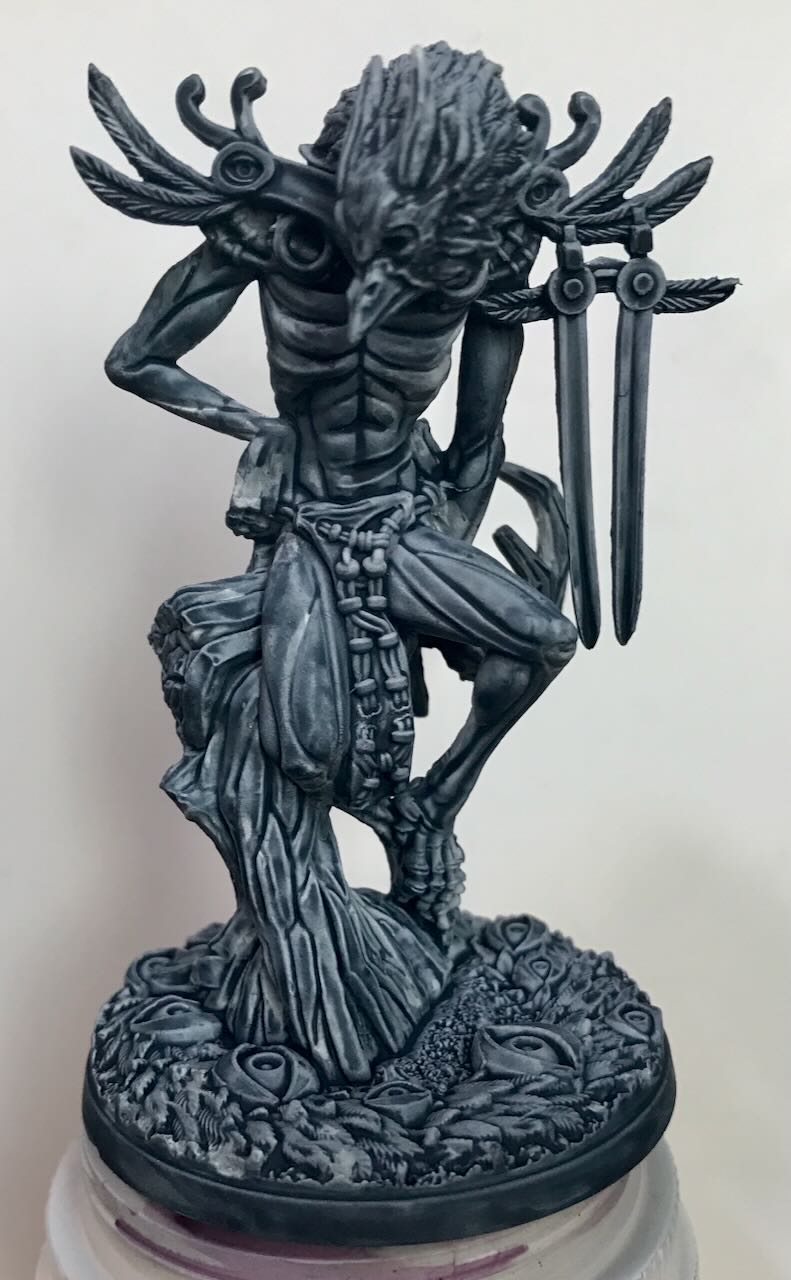
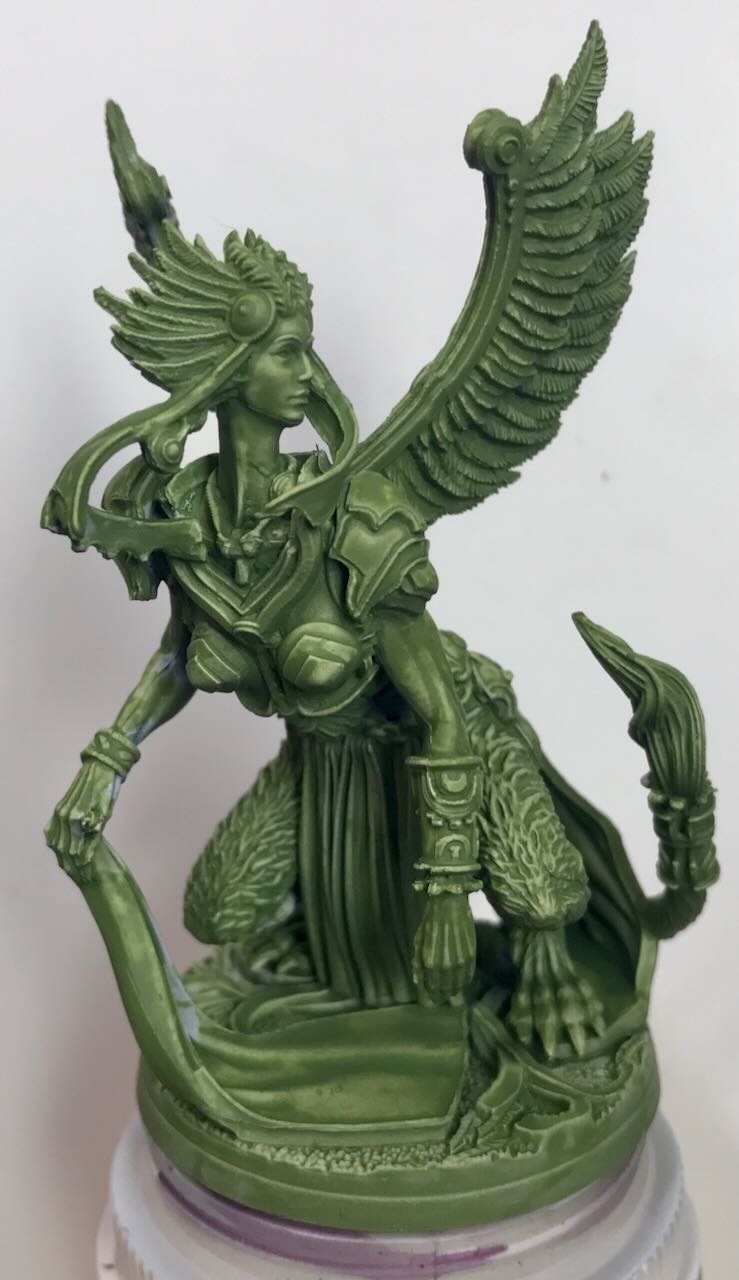

How I screwed up varnishing
My final step in painting minis is to apply varnish. After all, these figures are meant to be handled by players and stored in containers. I’d hate for any of the paint to rub off.
I used poster putty to stick the figures on cardboad, and used satin polycrylic spray.

In the past, I spray-varnished the minis outside, in the parking lot of my apartment complex. There were never any after effects before. But this time I did it after the lot had had a fresh layer of asphalt. The new layer is darker than the old layer. This happened:
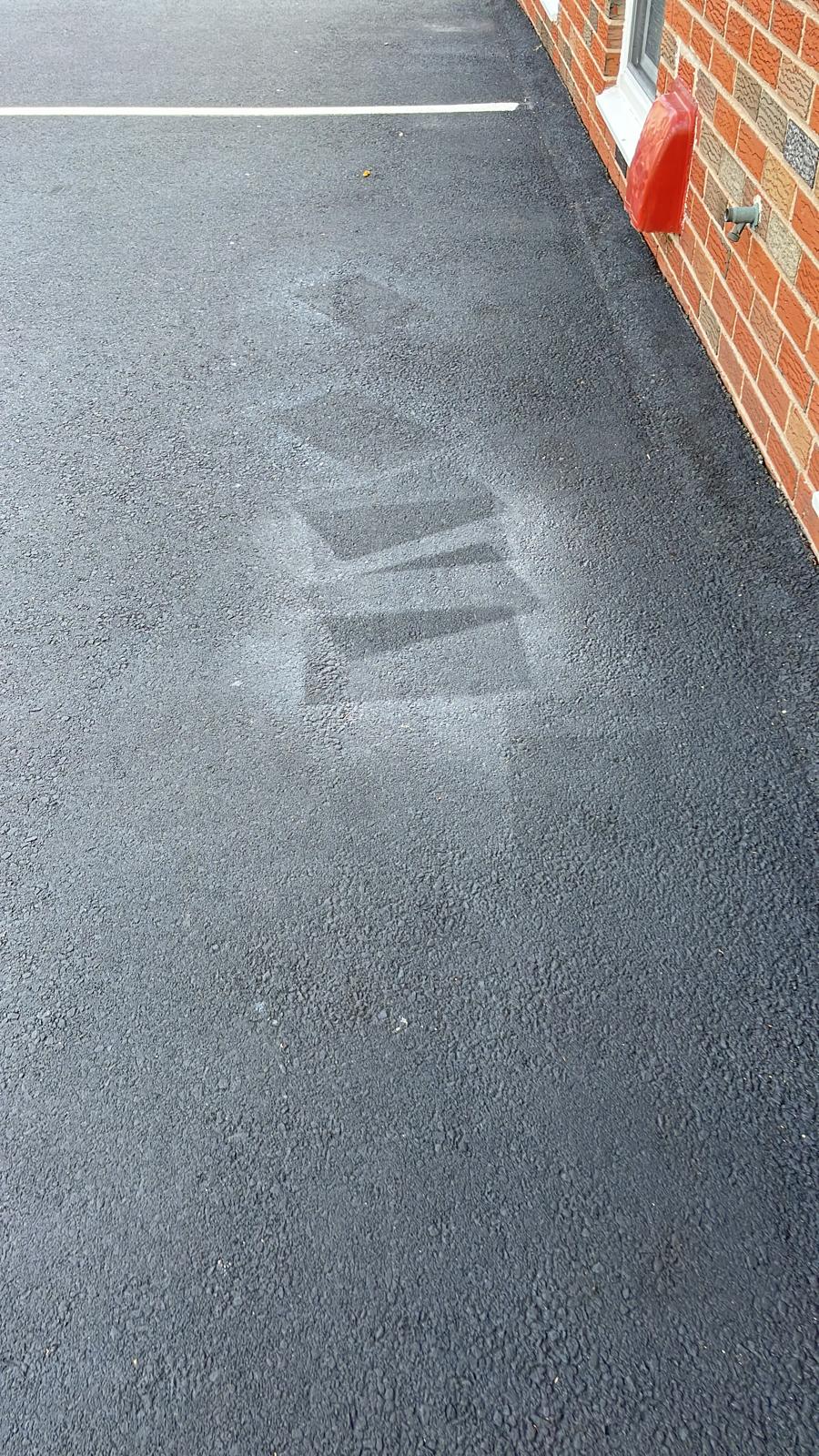
It’s possible that the polycrylic picked up moisture from a subsequent rainfall before it fully dried. Or perhaps there some reflective property of the varnish on the new asphalt that wasn’t visible on the old. In either case, those markings remain visible to this day.
The landlord rightfully called me out on this. There was nothing for me to do but to admit that it was my fault, and offer to pay for any restoration. So far, they’ve done nothing. That’s probably the best course of action; after all, if asphalt marks were permanent, there’d never be a need to renew the lines between parking spaces.
From now on, I’ll have to risk applying varnish using the airbrush. Oh, well. I buy cheap airbrushes anyway, so it’s no big deal if I clog up another one.
Choosing the alternatives
Now that I had two painted versions of each creature, I let my players decide which one we’d use while we played Etherfields. The boxes that the miniatures came in were a bit bulky for me to carry both of them every time we had a gaming session at my friends’ apartment. They made their choices, and we stored them in a Plano box:
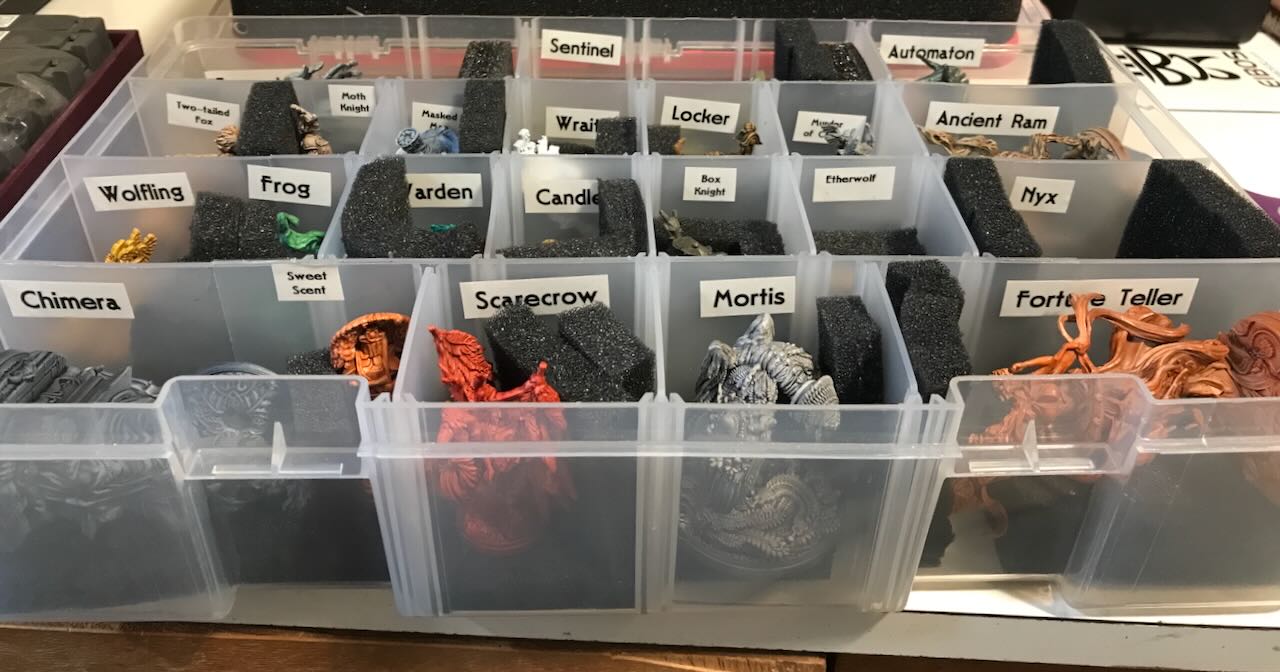
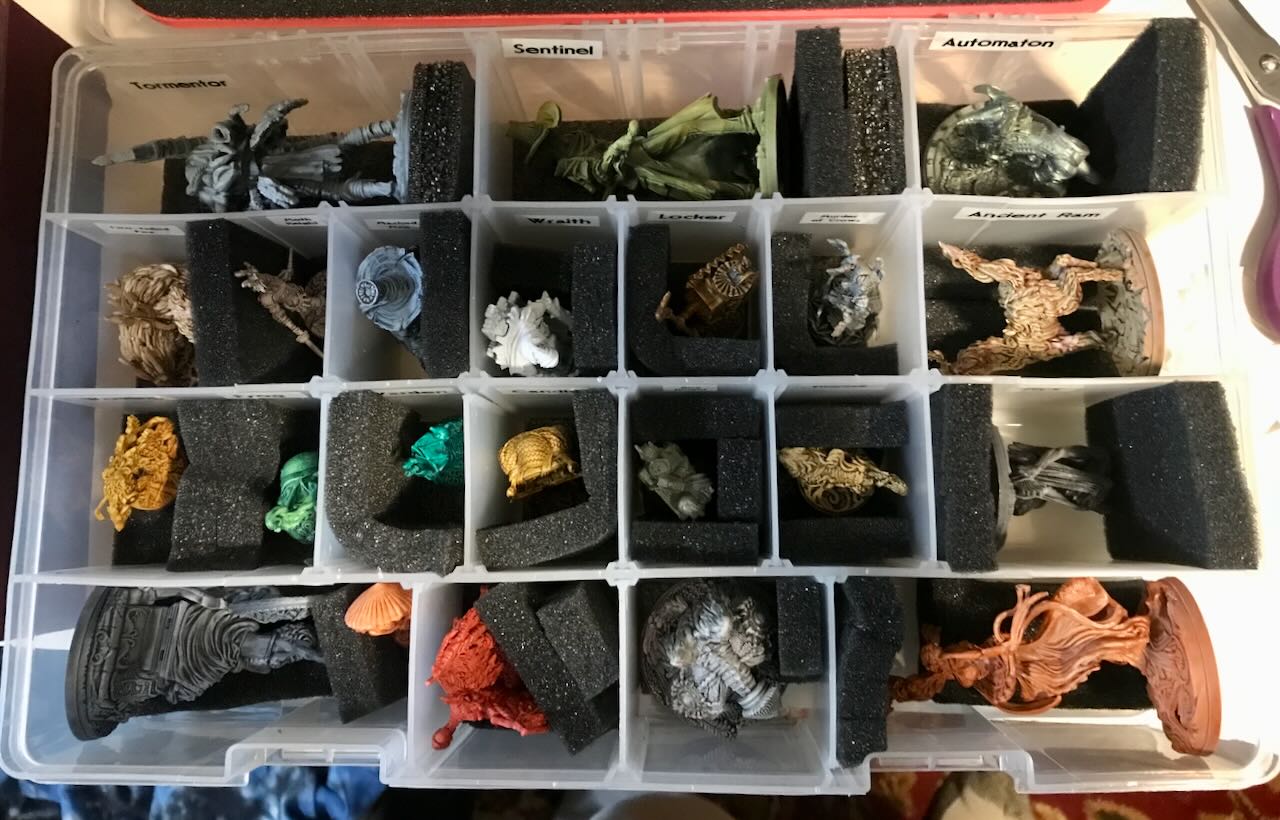
Overall, the players mostly chose the original minis from Wave 1 over the alternative sculptures from Wave 2. It wasn’t that the alternative artwork was bad; several times they agonized over the decision. However, they generally felt that the original minis matched their idea of what the Entities looked like in the Dreamworld of the game.
Pingback: Vallejo shifters, space dwarves, and ISS Vanguard – The Argothald Journal